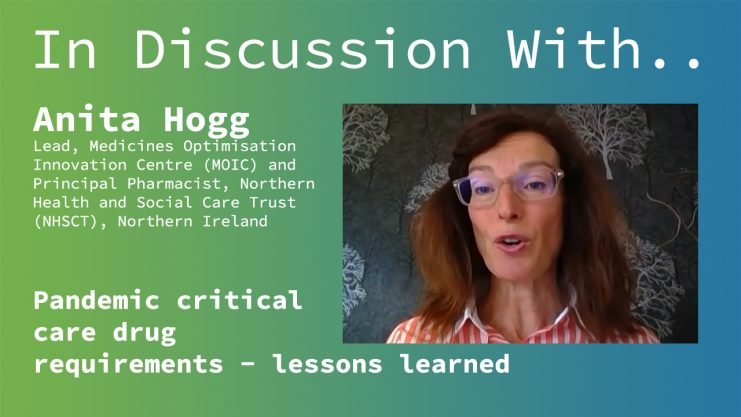Advertisment
Pandemic critical care drug requirements – lessons learned

Interview and article by Christine Clark
Pharmacist Anita Hogg explains how well Medicines Optimisation Innovation Centre (MOIC) model to estimate the critical care drug requirements during the covid-19 pandemic worked and the lessons learned
The model worked well because it provided a clear picture of capacity that allowed advance planning. It also meant that if stock was starting to become constrained, the second and third line options had already been identified and were and the available capacity was known. “The advantage of that is that we were reducing risk. If, for example, we had situation where there is not enough of a certain drug in the supply chain, we don’t want rapid changes of drugs and doses on the ground because we know that is not safe – we were able to plan and put in place mitigation measures”, explains Ms Hogg.
“We don’t want sudden shortages and because we did a huge amount of work with the regional pharmaceutical procurement service, linking with the manufacturers and wholesalers, we knew what capacity was there and the available stock, so in the event there were no shortages, everything was planned. This is what we need in healthcare especially in situations where there is potential chaos and over-ordering”, says Ms Hogg.
Although this work was done to ensure smooth supplies to critical care, the approach is applicable to other therapeutic areas such as palliative care. Many of the drugs used in palliative care are the same as are used in ICU. The MOIC has already applied the same approach – looking at the drugs, doses, percentage uptake, first-, second- and third-line choices – and agreed the lists with regional palliative care group in Northern Ireland.
Another area is operating theatres where some of the same drugs are used and the same type of approach could be used. “Anywhere where we need oversight and monitoring and we need to keep a handle on what’s happening, this type of approach would work”, says Ms Hogg.
Lessons learned
This piece of work demonstrated how adaptable pharmacists are and how pharmaceutical expertise can be “plugged into a lot of gaps in the system”, says Ms Hogg. Although not traditionally part of the pharmacist’s role, it was critical to the way in which planning preparedness was navigated in Northern Ireland. One of the comments received was about how well pharmacists and pharmacy in Northern Ireland worked together for the greater good “There was never a sense of one organisation or one trust trying to grab more stock, it was very much ‘We’re in this together’”, says Ms Hogg. She also emphasises that a key element of this work was the collaborative, partnership approach that included all of the relevant stakeholders from the outset.
A full report of this work can be found here.
Hogg A, Huey R, Scott MG, et al. Informing critical care drug requirements in response to the COVID-19 pandemic. Eur J Hosp Pharm. 2020;27:263–266.
Read and watch the full series on our website or on YouTube.





